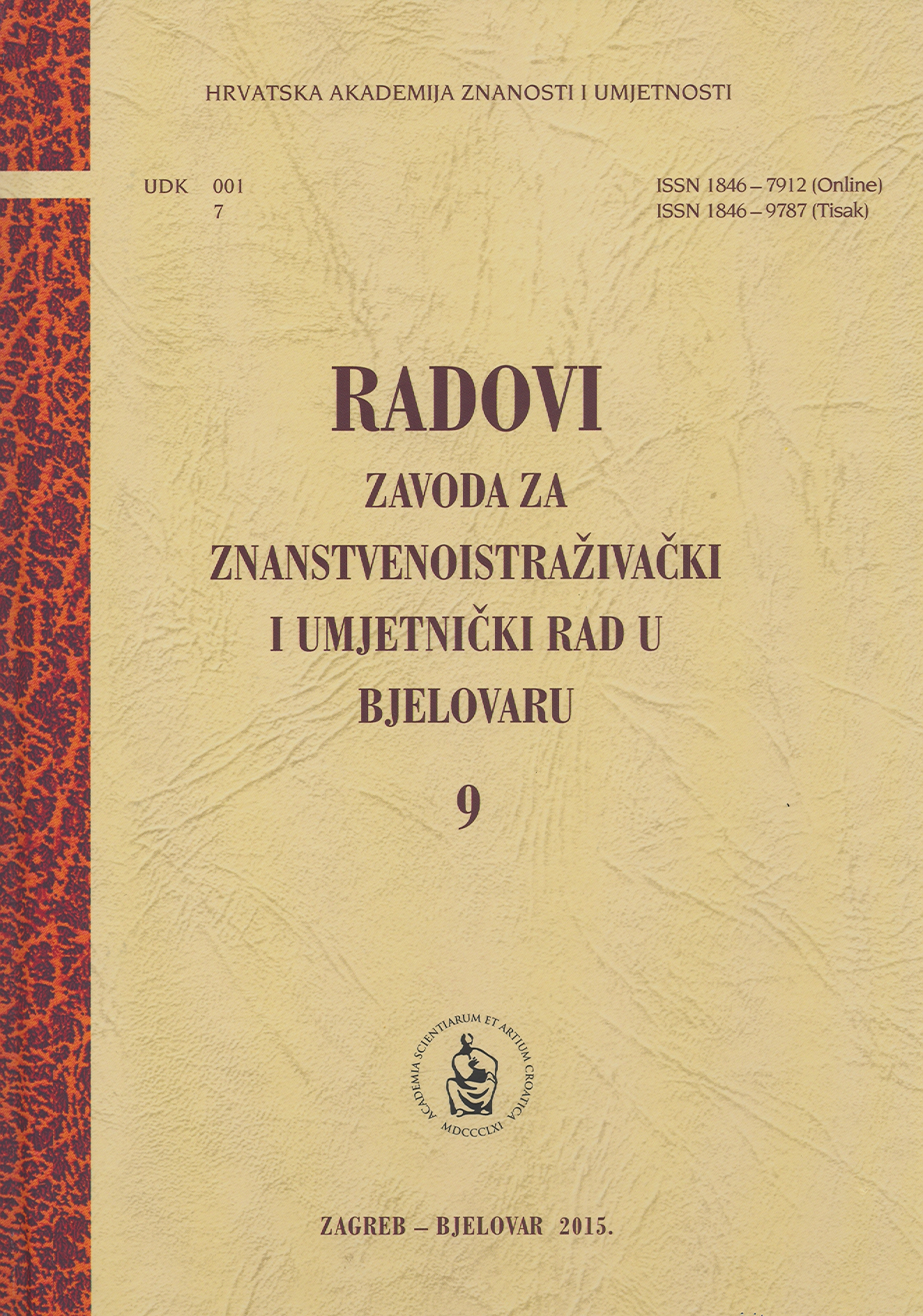Arheološki, antropološki i povijesni pokazatelji života srednjovjekovne populacije sjeverozapadne Hrvatske
Archaeological, Anthropological and Historical Indicators of Life of the Mediaeval Population in Northwest Croatia
Author(s): Goran JakovljevićSubject(s): Anthropology, Archaeology, Economic history, Middle Ages
Published by: Hrvatska akademija znanosti i umjetnosti - Zavod za znanstvenoistraživački i umjetnički rad u Bjelovaru
Keywords: quality of life; hospices; lucrum camerae; tax system; economy; dental hypoplasia; cribra orbitalia;
Summary/Abstract: As a multidisciplinary analysis, the study endeavours to holistically reconstruct life conditions on representative mediaeval archaeological localities in northwest Croatia. Historical indicators speak in favour of the fact that life had initially been organised within the social and political frame of the central power impersonated in the king and the territorial organisation of the Hungarian Kingdom. The process during which the privileged classes had gained independence from the royal power created in the 13th century resulted in such a situation in which this new social, economic and political elite took over public administrative and judicial functions, which further led to falling apart of the old county units of the royal administration and their becoming autonomous. In the new system, towns started playing an increasingly major role, and their importance was additionally reflected in the development of economy as a further factor relevant for the quality of life of the then contemporary population. This inevitably led to the process of introducing into the country money, which became the principal means of payment regarding taxes that had until then been paid in nature. The paleopathological picture of the population of that time, observed through registered dental hypoplasia and cribra orbitalia, generally speaks of malnutrition, presence of certain diseases, etc., yet due to circumstances that may not be connected to the ones present on other localities in the same period. As a result of the development of socio-political and economic relationships in the period between the 14th and the 16th centuries, the factors influencing the quality of life of the population became increasingly universal, and essential differences between the life of people in northwest Croatia and other parts of Croatia ceased to exist. The paleopathological picture of the researched localities began increasingly reflecting individual problems of individuals, whilst the importance of the problems of communities decreased, except in extreme cases of global stress situations, such as famine in broader areas caused by either natural or war disasters. The 14th and the 15th centuries were marked by the development of socio-political relationships, the centralisation of the administrative pyramid on the top of which stood the ruler, and economic relationships primarily subordinated to the accumulation of capital into the royal treasury; agriculture as an economic factor also stood in the service of such organisation. The analysed archaeological material witnesses to the fact that culturological processes may not be connected with the socio-political circumstances of a certain moment; they should rather be regarded as a product of diverse influences, regardless of their territorial and temporal origin (east or west of Europe, periods preceding or following the movement of peoples, etc.), which primarily served the functionality and additionally perhaps also the economic status of an individual user. This conclusion excludes only money as an equivalent of political and economic factors closely linked to statehood, or rather the personalisation of the ruler.
Journal: Radovi Zavoda za znanstvenoistraživački i umjetnički rad u Bjelovaru
- Issue Year: 2015
- Issue No: 9
- Page Range: 199-243
- Page Count: 45
- Language: English, Croatian

